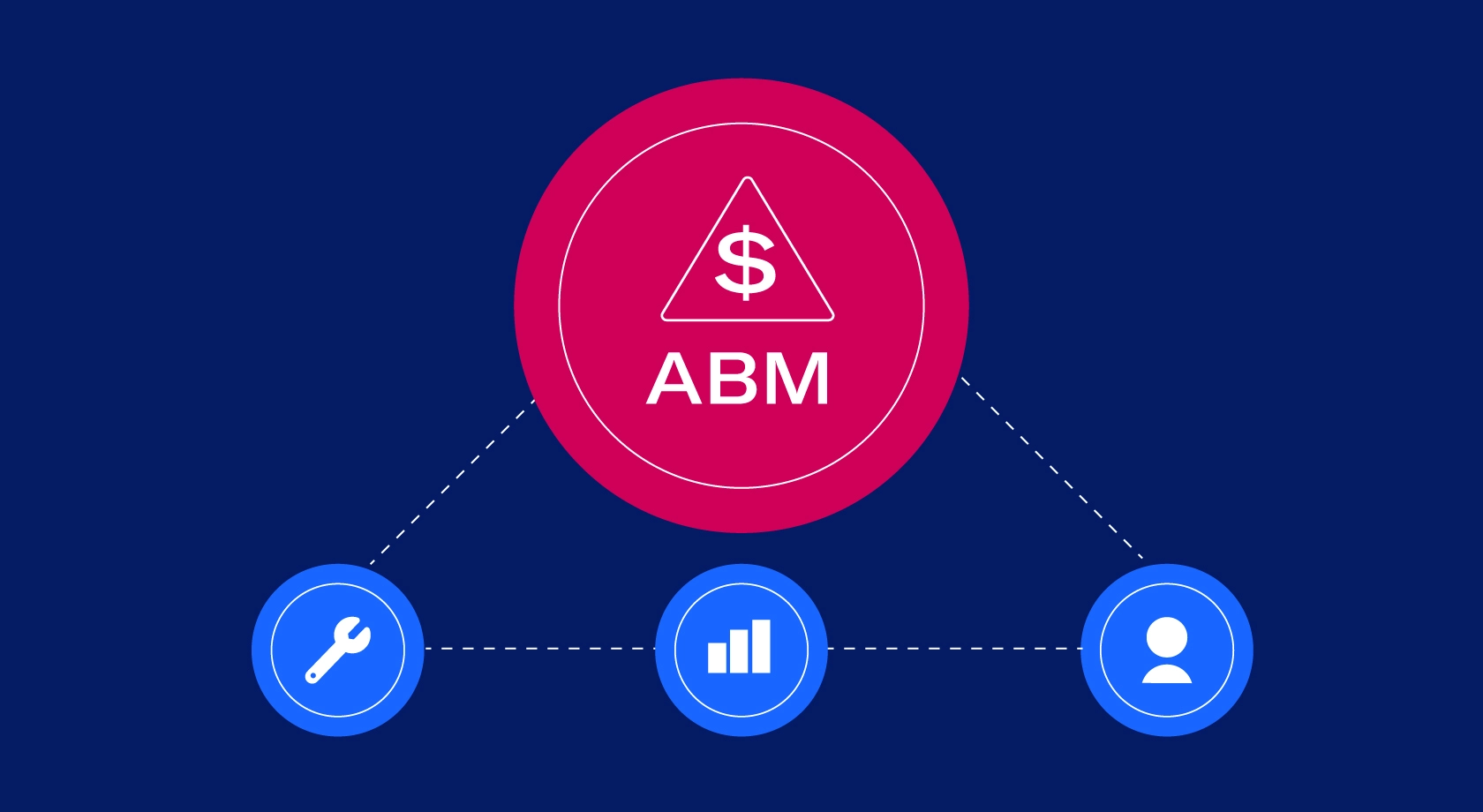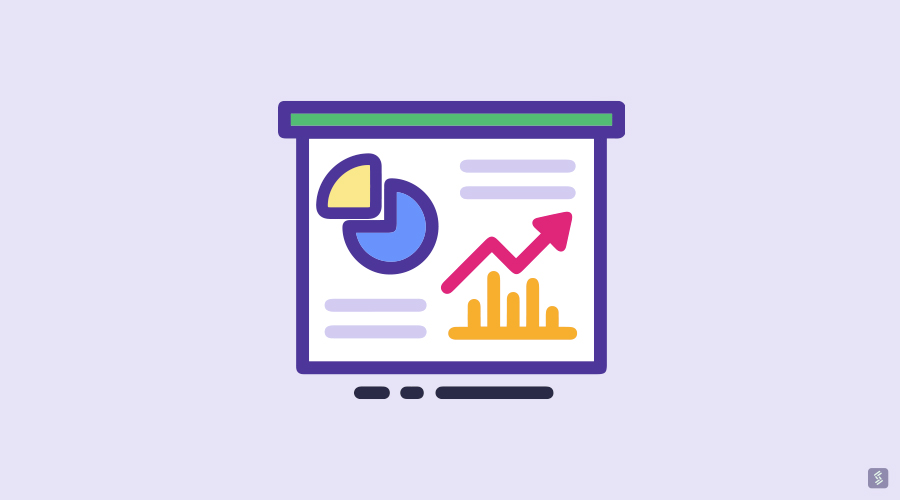
Proven Methods for Successful Cold Calling and Lead Generation
September 19, 2025
Measuring ABM Campaigns: Essential Metrics and KPIs
September 19, 2025A. Setting the Stage for Account-Based Marketing (ABM)
In the ever-evolving landscape of digital marketing, Account-Based Marketing (ABM) has emerged as a strategic powerhouse. Unlike traditional approaches that cast a wide net, ABM takes a targeted, personalized route. At its core, ABM is about treating individual accounts as markets in their own right, tailoring campaigns to specific companies rather than broad audience segments.
- Defining Account-Based Marketing: ABM is more than just a buzzword; it’s a paradigm shift. It’s the antithesis of the spray-and-pray strategy, focusing on quality over quantity. By identifying high-value accounts and crafting personalized campaigns, businesses can foster stronger relationships and drive revenue growth.
- Significance of Personalized Approaches: The generic, one-size-fits-all marketing approach is a relic of the past. In the age of information overload, customers crave personalization. ABM recognizes this need, delivering tailored content and experiences that resonate with the unique challenges and goals of targeted accounts.
- The Evolution of ABM in Modern Marketing: ABM is not static; it’s a dynamic strategy that evolves with the marketing landscape. Initially embraced by B2B enterprises, ABM’s success has prompted its adoption across various industries. Understanding the journey of ABM provides crucial insights into its adaptability and continued relevance.

The Foundation: Quality Data in ABM
A. Importance of Accurate Data
For ABM to yield fruitful results, it relies heavily on the quality of data at its disposal.
- Precision in Targeting: Accurate data enables pinpoint precision in identifying and targeting high-value accounts. Rather than casting a wide net and hoping for hits, businesses can direct their efforts where they matter most.
- Enhancing Customer Segmentation: Segmentation is the heartbeat of effective marketing. Quality data allows businesses to segment their audience not just by demographics but by behaviors, preferences, and historical interactions, creating nuanced customer profiles.
- Avoiding Missteps with Reliable Data: Inaccurate data can lead to missteps, damaging relationships and wasting resources. The importance of reliable data cannot be overstated; it’s the bedrock upon which successful ABM strategies are built.
B. Types of Data Essential for ABM
- Firmographic Data: The Business Blueprint: Understanding the DNA of a business is key. Firmographic data, encompassing industry, company size, and revenue, provides the blueprint for tailoring campaigns to specific organizational structures.
- Technographic Data: Understanding Technology Stack: In the digital age, a company’s technology stack is its backbone. Technographic data reveals the tools and technologies a company employs, offering insights into compatibility and potential pain points.
- Intent Data: Unveiling Buying Signals: Knowing when a prospect is ready to make a move is invaluable. Intent data, derived from online behaviors, unveils buying signals, allowing timely and targeted interventions.
- Behavioral Data: Mapping Customer Interactions: Understanding how customers interact with content provides a roadmap for engagement. Behavioral data tracks clicks, opens, and other interactions, guiding marketers in creating content that resonates.
C. Data Sourcing Strategies
- Utilizing First-Party Data: First-party data, collected directly from interactions with customers, is a goldmine. Leveraging data collected from website visits, interactions with customer support, and past purchases adds a personal touch to ABM strategies.
- Augmenting with Third-Party Data: While first-party data is powerful, augmenting it with third-party data enriches the understanding of target accounts. External sources provide additional context, filling in gaps and creating a comprehensive view.
- Data Cleansing for Pristine Accuracy: Data quality is a moving target. Regular cleansing activities, including removing duplicates, updating outdated information, and validating entries, ensure the data used in ABM remains accurate and actionable.

Crafting a Data-Driven ABM Strategy
A. Aligning Data with Business Goals
ABM without alignment is like sailing without a compass—directionless.
- Defining Key Performance Indicators (KPIs): Identifying KPIs is the North Star of any ABM strategy. Whether it’s lead conversion rates, revenue growth, or customer retention, aligning data with specific KPIs ensures a clear path to success.
- Tailoring Data to Specific Campaign Objectives: Different campaigns have different objectives. Tailoring data to match these objectives enhances the relevance and impact of ABM efforts. Whether the goal is brand awareness or lead generation, data customization is key.
- Establishing Metrics for Continuous Optimization: The beauty of ABM lies in its adaptability. Establishing metrics for continuous optimization allows marketers to tweak strategies based on real-time data, ensuring ongoing relevance and effectiveness.
B. Personalization Prowess
- Dynamic Content Tailoring: Static content is the old guard; dynamic content is the hero of ABM. Tailoring content based on real-time data ensures that each interaction is relevant and resonates with the unique needs of the target account.
- Hyper-Personalization with AI Integration: The era of manual personalization is fading. AI integration takes personalization to the next level, analyzing vast datasets to predict preferences, behaviors, and even potential pain points, resulting in hyper-personalized campaigns.
- Nurturing Long-Term Relationships through Personal Touch: ABM is not a one-night stand; it’s a long-term commitment. The personal touch fostered by data-driven insights builds lasting relationships, turning one-time buyers into loyal advocates.
C. Integrating Data Across Platforms
- Seamless CRM Integration: A disjointed approach is the nemesis of ABM. Seamless integration with Customer Relationship Management (CRM) systems ensures that data flows seamlessly across departments, avoiding silos and enhancing collaboration.
- Coordinated Efforts with Marketing Automation: Automate, but do it wisely. Coordinated efforts with marketing automation platforms streamline processes, allowing marketers to focus on strategy while routine tasks are handled with efficiency and precision.
- Bridging Gaps with Sales Teams: ABM is a team sport. Bridging gaps with sales teams ensures that the insights derived from data are not confined to marketing departments. Collaboration aligns efforts, creating a unified front in the pursuit of account-centric success.
Overcoming Challenges in Data Utilization
A. Privacy Concerns and Compliance
In the age of heightened awareness about data privacy, navigating the landscape of laws and regulations is paramount.
- Navigating the Landscape of Data Privacy Laws: The GDPR, CCPA, and other acronyms might seem daunting, but they are guardrails. Understanding and navigating these laws ensures that data usage remains ethical, legal, and trust-building.
- Building Trust through Transparent Practices: Trust is the currency of the digital age. Building trust through transparent practices, such as clearly communicating data usage policies, establishes a foundation of credibility and reliability.
- Anonymization Techniques for Enhanced Security: Anonymity and security go hand in hand. Employing anonymization techniques, such as data masking and encryption, ensures that sensitive information remains protected, reducing the risk of breaches.
B. Data Silos and Integration Hurdles
Breaking down silos is not just a metaphorical gesture; it’s a strategic imperative.
- Breaking Down Departmental Barriers: Data should not be confined to departments; it should flow freely. Breaking down departmental barriers ensures that insights are shared, and strategies are aligned across the organization.
- Implementing Unified Data Platforms: Silos crumble when data platforms unite. Implementing unified data platforms ensures that information is centralized, easily accessible, and consistently updated, fostering a holistic view of accounts.
- The Role of Cross-Functional Teams in Integration: Data integration is not a solo act. Cross-functional teams, comprising members from marketing, sales, IT, and other departments, play a pivotal role in ensuring seamless integration and sustained collaboration.
C. Data Quality Assurance
In the world of data, quality assurance is non-negotiable.
- Regular Audits and Updates: Data is dynamic; it’s not a one-time affair. Regular audits and updates ensure that the data used in ABM remains current, accurate, and aligned with the evolving landscape.
- Implementing Data Governance Frameworks: Governance brings order to the data chaos. Implementing data governance frameworks establishes guidelines for data usage, ensuring consistency and compliance across the organization.
- Educating Teams on Data Handling Best Practices: Data literacy is a superpower. Educating teams on data handling best practices ensures that everyone understands the nuances of data, promoting responsible and effective usage.

Realizing ROI: Measuring Data Impact in ABM
A. Quantifying Success with Metrics
Success without metrics is a myth. Quantifying success with metrics such as revenue attribution, customer lifetime value, and customer acquisition costs provides a tangible understanding of the impact of data-driven ABM.
- Revenue Attribution Models: Where did the revenue come from? Revenue attribution models answer this question, attributing revenue to specific campaigns, channels, or touchpoints, allowing for strategic allocation of resources.
- Customer Lifetime Value (CLV) Analysis: Beyond one-time transactions, CLV is the golden metric. Analyzing customer lifetime value provides insights into the long-term profitability of accounts, guiding future strategies and resource allocations.
- Analyzing Customer Acquisition Costs (CAC): Efficiency matters. Analyzing customer acquisition costs ensures that resources are deployed judiciously, optimizing the balance between acquisition and retention efforts.
B. A/B Testing for Continuous Improvement
In the world of ABM, stagnation is the enemy.
- Iterative Campaign Refinement: ABM is a journey of continuous refinement. A/B testing allows marketers to iterate campaigns, testing variations and optimizing elements based on real-time performance data.
- Adapting Strategies Based on Performance: The beauty of data is its adaptability. Adapting strategies based on performance ensures that marketers stay nimble, adjusting their approach to align with the ever-changing needs and preferences of target accounts.
- Extracting Insights from A/B Test Results: Testing is not just about results; it’s about insights. Extracting insights from A/B test results provides valuable learnings that shape future strategies, ensuring a cycle of perpetual improvement.
C. Case Studies in Successful Data-Driven ABM
XYZ Corp: Achieving 30% Increase in Conversion Rates
Real-world success stories validate theory. XYZ Corp’s journey, achieving a 30% increase in conversion rates through meticulous data-driven ABM, serves as inspiration for others on the path to success.
Case of ABC Ltd: Leveraging Data for Strategic Partnerships
ABM is not just about sales; it’s about partnerships. The case of ABC Ltd showcases how data-driven insights paved the way for strategic partnerships, expanding the horizon beyond immediate transactions.
PQR Inc: From Data-Driven Insights to Market Domination
Market domination is not an accident; it’s a result. PQR Inc’s ascent from leveraging data-driven insights to market domination provides a roadmap for ambitious businesses aiming for the summit.

Future Trends: Data’s Role in the Evolution of ABM
A. Artificial Intelligence and Predictive Analytics
The future is powered by algorithms, and ABM is no exception.
- Harnessing AI for Predictive Lead Scoring: Gone are the days of guesswork. AI-driven predictive lead scoring uses historical data and machine learning algorithms to identify high-potential leads, ensuring a more focused and efficient approach.
- AI-Driven Content Recommendations: Content is king, but relevance is its crown. AI-driven content recommendations analyze user behavior and preferences to suggest content that aligns with individual account needs, enhancing engagement.
- Predictive Account Segmentation: One size fits none. Predictive account segmentation, powered by AI, ensures that accounts are grouped based on evolving criteria, creating dynamic segments that mirror the fluid nature of the market.
B. Expansion to Omni-Channel Data Integration
ABM transcends channels; it’s a holistic experience.
- Unifying Data from Various Customer Touchpoints: Accounts don’t exist in isolation. Unifying data from various customer touchpoints—be it social media, email, or website interactions—creates a comprehensive view, enabling more informed and impactful strategies.
- The Role of Social Media in ABM: Social media is not just a platform; it’s a conversation. The role of social media in ABM extends beyond broadcasting messages, evolving into a dynamic channel for engagement and relationship-building.
- Cross-Platform Consistency for Enhanced Engagement: Consistency breeds familiarity. Cross-platform consistency ensures that messages and experiences are coherent across channels, enhancing engagement and reinforcing brand identity.
C. The Rise of Account-Based Everything (ABE)
ABM is not a silo; it’s a philosophy.
- Expanding ABM Beyond Marketing and Sales: ABE is the natural evolution, expanding ABM principles beyond marketing and sales. It integrates account-centric thinking into product development, customer service, and every facet of business.
- Collaborative ABE Strategies Across Departments: Isolation is outdated. Collaborative ABE strategies involve all departments, creating a synchronized approach where every team contributes to the overarching goal of enhancing customer experiences and driving growth.
- A Glimpse into the Holistic ABE Approach: The future is holistic, and so is ABE. A glimpse into the holistic ABE approach showcases the interconnectedness of all business functions, aligning efforts for a unified and customer-centric experience.
Conclusion
The journey through the intricate web of Account-Based Marketing (ABM) and data integration is nothing short of transformative.
The Ever-Evolving Landscape of ABM
ABM is not a static painting; it’s a dynamic masterpiece. The landscape is ever-evolving, presenting opportunities for innovation, adaptation, and growth.
Data’s Pivotal Role in Shaping Future Success
Data is not a bystander; it’s the protagonist in the ABM story. Its pivotal role in shaping future success is undeniable, influencing strategies, driving insights, and propelling businesses toward new heights.
Ready to Transform Your ABM Strategy with Data?
The path is clear, illuminated by the insights derived from data. The question remains: Are you ready to transform your ABM strategy with the power of data?



